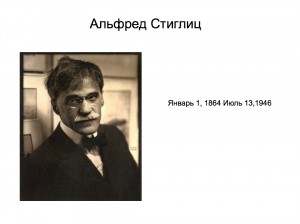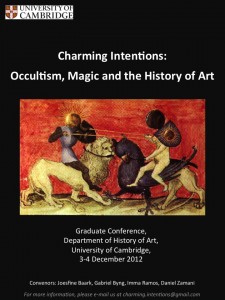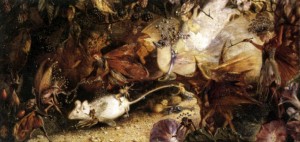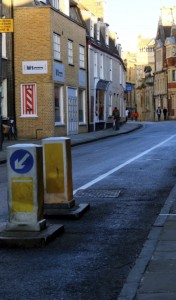What follow are excerpts from a seminar paper written by graduate student Angela Daniels. Her research uncovered the historical context of the circus scenes created by late-nineteenth-century French artist Henri de Toulouse-Lautrec, including the print of “Footit and Chocolat” which is part of the Dolly Fiterman collection at the University of St. Thomas.

Henri de Toulouse-Lautreac, Le Cirque. Gift of Dolly Fiterman. Photo: Christy Dent.
Henri de Toulouse-Lautrec and the Circus: A Complex Relationship to Nineteenth-century France by Angela Daniels
In the brief intervening years between his life and death, Henri de Toulouse-Lautrec chose to live as an artist and amassed an impressive body of work.(1) To accomplish this he became a consummate recorder of people from an early age. His approach as an artist to his subject matter might be compared today to that of participant-observation normally undertaken by anthropologists, whereby one both observes and records the complex relationships and interactions of a group, but also acts as a member of the group to better understand them.
Montmartre and its melting-pot of social classes was his area of study. Though Toulouse-Lautrec would come to be known most for his depictions of the women and the cabarets in this locale, it was actually the circus and its performers that he was exposed to as a young artist. It would be the imagery of the circus that he recalled from memory and returned to in his art at the end of his life as his health began to fail and the question of his sanity was at stake.(2)
For this project, it is Toulouse-Lautrec’s imagery that is compelling as an area for research. I argue that this work, particularly the artist’s treatment of the figures in the composition, is influenced by the cultural and political atmosphere of Montmartre, particularly the social class conflicts and interactions Toulouse-Lautrec witnessed as a patron and resident of Montmartre.
Even before Toulouse-Lautrec moved to Paris, events were unfolding that would create a conducive climate for the type and style of art he would come to create throughout his artistic career. The first factor was the establishment of the Third Republic government of France shortly after his birth in 1870 to 1871; second, the influence of Impressionism as the major art movement in his formative years; third, the relaxation of censorship as it applied to visual and literary pursuits originally instituted to restrict political satire; and fourth, his involvement with avant-garde circles, notably the Young Independents group and later, Thadée Natanson and the artistic and literary circle surrounding the publication, La Revue Blanche.
The institution of the Third Republic as France’s system of government was marked with an uneasy acceptance by French citizens from its beginning. Established between 1870 and 1871, it served as a replacement for the failed Second Empire under the rule of Napoleon the Third. The political leaders of the new Third Republic were forced to concede to and make peace with Germany, made especially necessary with the anticipation of a civil war rumbling among citizens of the lowest classes impacted most by the effects of the siege and angered by France’s concessions to Germany.
The bourgeoisie, or middle class, of France became particularly visible during this period of France’s history. This economic and social class emerged from the fruits of the economic success of the European industrial revolution and the competitive ideologies of a capitalist society. Armed with their newfound wealth, the bourgeoisie made possible the expansion of Montmartre into an entertainment district responsible for catering to the nouveau riche with leisure time to spare.(3)
Though Toulouse-Lautrec could actually claim aristocratic lineage and upbringing, he chose to self-identify with the artists and the rest of the lower-class echelons of French society that called Montmartre home.(4) They envisaged the bourgeoisie as the embodiment of the ineffectual government of the Third Republic.(5) During the Third Republic, it was the entertainment venues of Montmartre that became the stage on which the drama of class divisions was played.
Before the entertainment venues of Montmartre, modern Paris and her designer had already shaped the city landscape into an ideal setting for the display of bourgeois wealth and status. Under the guidance of Baron Georges von Hausmann, the Gothic design of Paris was radically transformed into a modern, post-Enlightenment city. More broad, well-lit avenues created clear sightlines down the busiest streets of the city framed and unimpeded by the new, uniform facades lining the boulevards. The intention of the transformation was to reduce crime, as well as to accommodate the population influx from the industrial revolution, and to participate in a modern aesthetic for urban design.(6) Almost immediately, the bourgeois adopted the boulevards as a format for display of the wealth and status it afforded, a kind of visual spectacle of the new modernity.
“We need publicity, daylight, the street, the cabaret, the café, the restaurant…We like to pose, to make a spectacle of ourselves, to have a public, a gallery, witnesses to our life.”(7) But spectacle could also mean something more sinister. In the context of the entertainment venues frequented by the bourgeoisie, the performances and the performers also became a spectacle. The bourgeois patrons of these establishments paid to view the low-class performers, objectifying them as a visual spectacle and perpetuating class hierarchies.(8)
The artists of the Impressionist movement, such as Edgar Degas, were the first of this period to capture the phenomenon of visual spectacle. They painted the boulevards, the theaters, the cafés, and the circuses with the top-hatted patrons in the audience and lurking backstage with the performers framed on stage. Many scenes of performances manifest as cropped views, framing the performers as the focal point of work—the view one might have if seen through binoculars.
The circus did not have a native tradition in France, but inherited and adapted the practice from the Italian commedia dell’arte and the English touring circus.(9) The English variety was particularly important to this discussion for its contribution of the Auguste clown character and is the historical precedent for the type Toulouse-Lautrec depicted in the work from the Fiterman collection.(10)
Footit and Chocolat were the most successful interracial clown duo performing in Paris at this time. The man that assumed the character of Chocolat was an Afro-Cuban immigrant from Havana. The Englishman from Manchester who played Footit styled his character as the clever antidote to Chocolat’s foolishness, thus completing the dynamic act of opposition, both in difference of skin color and personality. The exploitation of their many differences added to the comedy, which was only further heightened by the effect of their costumes.
Romantic and Realist artists and literary figures adopted and identified with the clown as a symbol of popular culture, evocative of the precarious state of the human condition.(11) One group of artists, known as the Young Independents shared an empathetic ideology and subscribed to a lifestyle that aligned harmoniously with the contemporary attitudes toward the clown and class distinction. The content in their work reflected these principles and suggested a fascination with the sexual exploitation and class voyeurism that went hand in hand with the entertainment venues of Montmartre.(12)
In 1881 France relaxed censorship laws that had been put in place to limit the social and political critique of the republic and middle class in response to the rapidly modernizing landscape.(13) The act of lifting the bans also coincided with educational reform in France that created a more literate public and provided a greatly expanded readership for the magazines and newspapers. Caricature of social types became popular after these censorship bans were lifted in photography, illustration, and journalism.(14)
Caricature became a central element in Toulouse-Lautrec’s works beginning in the 1890s at the same time he was personally and professionally supported by Thadée Natanson of La Revue Blanche. As one half of the founding team of the literary periodical, Natanson cultivated a circle of friends that critiqued the conventionalism embodied by the conservative bourgeoisie.(15)
As artist Toulouse-Lautrec’s oeuvre shows, his work was highly dependent and reflective of the environment in which he lived and worked. Toulouse-Lautrec and his contemporaries in the latter half of the nineteenth century depicted the social inequalities between the bourgeoisie and the lower classes in their immediate environments. Spurred on by the failings of the Third Republic toward the lower classes, artists’ imagery moved to Montmartre and the interiors of the entertainment venues where the bourgeois flocked to visually consume the spectacle of the performers on stage.
Toulouse-Lautrec depicted this dynamic in Footit et Chocolat. The space of the spectacle is contained by the boundary of the circus ring and overall cropping of the scene to frame the action of the clown duo as the object of the viewer’s focus. The viewers in the scene behind the ring wear top hats, carry canes, and festoon their suits with military awards barely discernible. These are the bourgeois patrons of the circus with their physiognomies mutated by caricature, so that only their quality of dress represents them.
NOTES
1 Gerhard Gruitrooy, Henri de Toulouse-Lautrec (New York: Smithmark Publishers, 1996), 113.
2 Wolfgang Wittrock, Toulouse Lautrec: The Complete Prints, vol. 1 of Toulouse Lautrec: The Complete Prints, trans. and ed. Catherine E. Keuhn (New York: Harper & Row Publishers, Inc., 1985), 113.
3 Wittrock, 106.
4 Ibid, 14.
5 Thomson, 4.
6 Mary Weaver Chapin, “Toulouse-Lautrec & the Culture of Celebrity,” in Toulouse-Lautrec & Montmartre (Washington, D.C.: National Gallery of Art, in association with Princeton University Press, 2005), 47.
7 Chaptin, 47.
8 James Smalls, “’Race’ As Spectacle in Late-Nineteenth-Century French Art and Popular Culture,” French Historical Studies 26, no. 2 (Spring 2003): 357-358.
9 A. H. Saxon, “The Circus as Theatre: Astley’s and Its Actors in the Age of Romanticism,” Educational Theatre Journal 27, no. 3, Popular Theatre (Oct., 1975): 300.
10 Smalls, 365.
11 Helen O. Borowitz, “Painted Smiles: Sad Clowns in French Art and Literature,” The Bulletin of the Cleveland Museum of Art 71, no. 1 (Jan., 1984):23.
12 Gruitrooy, 14.
13 Thomson, 17.
14 Thomson, 11.
15 E. Paul Gaultier, “La Revue Blanche,” Books Abroad 25, no. 4 (Autumn, 1951): 336.
Bibliography
Borowitz, Helen O. “Painted Smiles: Sad Clowns in French Art and Literature.” The Bulletine of the Cleveland Museum of Art 71, no. 1 (Jan., 1984):23-35.
Brown, Marilyn R. “’Miss La La’s’ Teeth: Reflections on Degas and ‘Race’.” The Art Bulletin 89, no. 4 (Dec., 2007): 738-765.
Cate, Phillips Dennis, Mary Weaver Chapin, and Richard Thomson. Toulouse-Lautrec and Montmartre. Washington: National Gallery of Art, in association with Princeton University Press, 2005. Published in conjunction with the exhibition “Toulouse-Lautrec and Montmartre” shown at the National Gallery of Art in Washington, DC, and the Art Institute of Chicago.
Gauthier, E. Paul. “La Revue Blanche.” Books Abroad 25, no. 4 (Autumn, 1951): 336-339.
Gruitrooy, Gerhard. Henri de Toulouse-Lautrec. New York: Todtri Productions Limited, 1996.
Haxell, Nichole A. “’Ces Dames du Cirque’: A Taxonomy of Male Desire in Nineteenth-Century French Literature and Art.” MLN 115, no. 4 French Issue (Sep., 2000): 783-800.
Saxon, A. H. “The Circus as Theatre: Astley’s and Its Actors in the Age of Romanticism.” Educational Journal 27, no. 3 Popular Theatre (Oct., 1975): 299-312.
Smalls, James. “‘Race’ As Spectacle in Late-Nineteenth-Century French Art and Popular Culture.” French Historical Studies 26, no. 2 (Spring 2003): 351-382.






